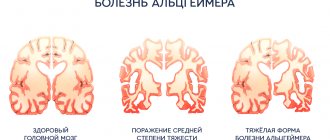Obsessive-compulsive disorder is a specific condition in which the patient suffers from fears, doubts and obsessive thoughts. This disease can be cured, but it will require long-term and serious work. Stable remission can only be achieved through the work of a qualified and experienced psychotherapist with the patient. During the treatment process, the doctor initially carries out diagnostic procedures. Thanks to this, it is possible to determine the main direction of individual treatment. It should be understood that patients are unlikely to be able to cope with the disease on their own. Therefore, even drug treatment may be required. The sooner you seek help from specialists, the faster you will be able to overcome this disorder.
Obsessive neurosis
Obsessive-compulsive neurosis is a psychiatric illness that is accompanied by frequent intrusive anxious thoughts. Patients do not have the ability to suppress them on their own. As a result, the problem is only beginning to gradually gain momentum and get even worse. People suffering from this disease often begin to perform peculiar rituals. For example, opening doors a certain number of times, turning lights on and off in a given rhythm. But a person fully understands the inadequacy of his actions and their negative consequences, but at the same time he cannot stop himself, repeating “traditions” again and again.
Obsessive Action Syndrome
Obsessive behavior syndrome can take three forms:
- One-time, which implies that the signs of neurosis can last for a long period, being at the same level of intensity.
- The remitting form characterizes a situation when signs of neurosis periodically worsen and then fade.
- The progressive form of neurosis implies that the symptoms only begin to worsen over time.
Obsessive behavior syndrome may occur due to the influence of biological factors, such as heredity or the presence of organic changes in the brain. But there are cases when acute psychological trauma and severe losses in a person’s life contribute to the disease. But obsessive actions can only arise in a patient if there is a biological tendency. If it is not there, the psyche reacts predominantly in a completely different way.
Obsessive behavior in adults
Experts divide manifestations of obsessive actions in adults into several categories, including:
- Classic tics, which are manifested by rapid movements of the head or neck. Also, tics of this type can also manifest themselves in sound, for example, constant mooing, coughing and much more.
- The stereotypical category includes frequent rocking in different directions, tapping fingers on the table surface, and jerking the leg. With such behavioral disorders, there are no prodominal signs that are harbingers of the onset of the disease.
- Behavioral disorders that cause physical harm to the patient - hair pulling, scratching or picking at skin, nail biting.
Such actions are performed unconsciously, since a person involuntarily performs certain actions. The tick stops for a while if requested by loved ones or if a situation arises that will distract from the “procedures.” However, after some time, this situation will certainly repeat itself again and again.
Diagnostics
As a rule, diagnosis is not difficult. A good specialist will conduct additional differential diagnostics to rule out diseases such as schizophrenia, brain tumor, etc. Basic diagnostic methods: history taking, examination, conversation with the patient’s family. If cardiac neurosis is suspected in adults, consultation with a cardiologist will be recommended.
Interesting fact: upon careful examination, 60% of patients are found to have other mental disorders.
Obsessive behavior in children
Obsessive behavior in children is a fairly common problem that many parents face. The disorder most often manifests itself when the child constantly bites his nails, twirls the hair on his fingers, and picks his nose. After repeated comments, the situation does not improve at all, repeating itself again and again. In this case, we are not talking about simple habits at all, but about neurosis. Therefore, it is quite difficult to deal with obsessive actions.
There can be many reasons for the manifestation of this type of illness, including divorce of parents, great fear of dog bites, or, for example, a child was once very scared because he almost drowned while swimming. Also, the reasons may be physiological, for example, after sinusitis in an advanced stage, which resulted in chronic intoxication of the body. It is important to start dealing with the situation in a timely manner, since fears that manifest themselves in childhood can develop into severe phobias after reaching adulthood. Therefore, if you notice regular habits in your child, such as tugging at the earlobe, cracking fingers, or any other actions that occur with enviable regularity, it is important to contact a specialist in a timely manner.
Causes and symptoms
A child’s nervous system disorder can be provoked by severe emotional shock, excessive fatigue and other negative external factors. It is generally accepted that the main reason for this in children two to three years old and preschoolers four to five years old is the family and relationships in it, since during this period they communicate closely only with their parents. In addition to the family, children aged six to seven years old, first grade students, are influenced by the school, relationships in the team, and the learning process.
Moscow doctors note that parents are increasingly interested in how to treat childhood neurosis at 2 years old. Primary schoolchildren (6-7 years old) and preschool children (4-5 years old) are brought to the reception. Neurosis began to rapidly become “younger”. The good news in this case is the fact that such childhood mental disorders are reversible. Their elimination is possible, regardless of the duration and nature of the course.
Signs of a neurotic reaction are obsessive movements and various unreasonable fears. It would seem, what kind of neurosis can a 3-year-old child have? But parents should be wary:
- teak;
- obsessive actions with body parts (patting, stamping, sniffing, shoulder twitching, etc.);
- speech disorders;
- enuresis;
- anxieties, fears.
Children 2-4 years old become irritable, often cry, fall into hysterics, can hit their heads on various objects, and throw toys around. Older children bite their nails, are afraid to be in a closed room, or vice versa, close themselves off from everyone in their room and do not react to adults.
Many people in Moscow ask, what to do if a 4-year-old child has neurosis? For any symptoms of behavior change, it is necessary to seek advice from a psychotherapist or psychologist so that the neurotic state does not transform into a serious mental illness.
Obsessive behavior after stroke
A stroke is a disruption of blood circulation in the brain that results in necrotic damage to nerve cells. Recovery from a stroke is a long process, during which a person will need to relearn basic things - talk, walk and even eat. This condition takes a toll on the patient’s psyche. As a result, it is not at all uncommon for obsessive behavior to occur after a stroke. In this case, a person often simply refuses to make any efforts to improve his condition. It seems to the patient that everything should go away on its own. A person is often completely confident that he can return to his previous life without any problems. When faced with failures, the result is deep depression and nervous breakdowns. This affects not only the patients themselves, but also their loved ones, who are unable to provide proper assistance on their own. Patients require 24-hour medical supervision. The patient needs the help of a qualified psychotherapist and psychologist, since difficult work lies ahead, the goal of which is to restore the person’s desire for life and the desire to achieve more and more success. Drug treatment for obsessive-compulsive disorders is used quite rarely, since a person under the influence of anidepressants loses the so-called “fighting spirit”. The work is carried out mainly in the form of dialogue with the doctor.
Treatment of obsessive behavior
When treating obsessive-compulsive disorders, an integrated approach will be required, which includes psychotherapy, during which a specialist works individually with the patient, drug treatment to correct anxieties and fears, and multiple modern relaxation techniques. Thanks to individual psychotherapy sessions, it is possible to determine the reasons why a person got into this situation. In the case when the patient begins to understand what exactly is the cause of obsession, the situation is much easier to control.
Thanks to cognitive behavioral therapy, you can achieve excellent results after just a couple of sessions. The doctor teaches his patient to detect and change negative attitudes to more optimistic ones. Thanks to this, the patient begins to gradually control his behavior, coping with a stressful situation.
Drug treatment is a last resort. For this type of therapy, patient consent is required. Antidepressants, anxiolics, which help fight anxiety, and sedatives, which can help overcome depression and increased anxiety in a shorter period, are taken as medications. As a result, sleep gradually normalizes and the patient’s general condition improves. Treatment must be carried out until the disease is completely defeated. That is, the course lasts until the patient is unable to independently control the disorder and all symptoms of the disease disappear completely.
If you are faced with this difficult situation, you must definitely contact a specialist. Our Salvation clinic has created the best conditions for a favorable exit from a neurotic state. Our staff consists of qualified psychotherapists who have extensive practical experience. Specialists practice the latest effective techniques, through the use of which you can achieve good results in a short time.
General characteristics of the disorder
OCD in most cases appears at a young age, between 10 and 30 years. However, it may take about ten years from the moment of its occurrence before the patient consults a doctor.
No relationship has been established between the disorder and the social level the person occupies. It occurs among people of both low and high economic classes, although it is reliably known that people with a high level of intellectual development are more susceptible to it.
Obsessions and compulsions can be:
- chronic in nature, when their manifestations remain unchanged during their existence;
- episodic in nature - occur in difficult, stressful situations;
- progressive nature - the condition worsens and becomes aggravated over time.
Depending on the degree of manifestation of the disorder, a person can maintain his usual way of life and resist his obsessions. Or, on the contrary, they change life so much that the patient cannot leave the house, loses social contacts and the ability to engage in professional activities.
The main characteristics that distinguish OCD from other disorders are:
- obsessions arise involuntarily with clear consciousness;
- beyond the control of the patient;
- cause anxiety;
- repeated often to the point of annoyingness;
- the person understands the absurdity of the situation, perceives obsessions as irrational and inadequate;
- attempts to cope with them only bring relief for a while, then the situation repeats itself;
- actions aimed at combating obsessions cause fatigue;
- obsessions are not related to the direction of thinking.
This disorder was first described by Dominique Esquirol in 1827 and called it the disease of doubt.






